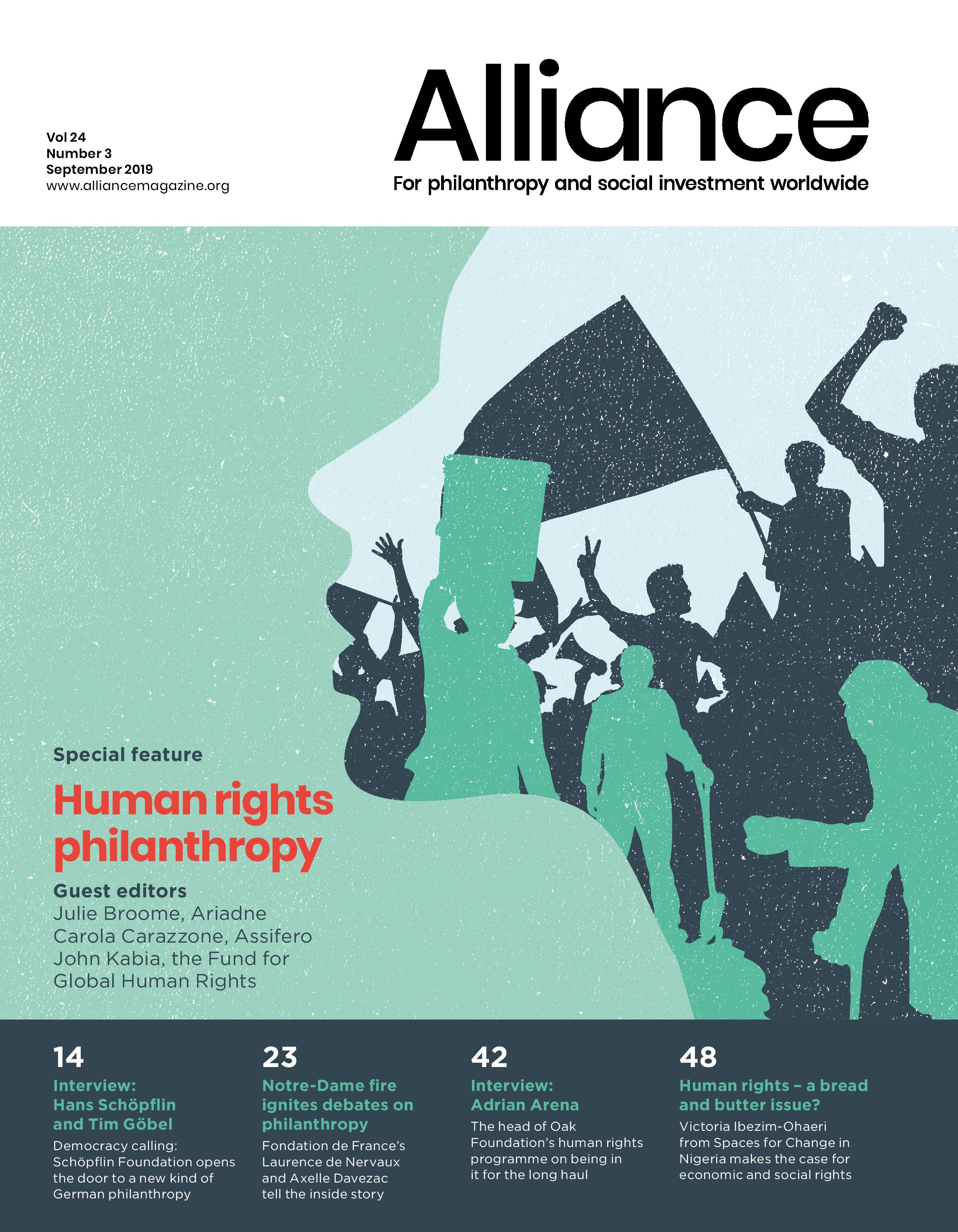‘What’s peace got to do with philanthropy?’ A stupid question you may mutter. Of course, peaceful and stable societies are the foundation stone for the vast majority of philanthropic endeavours as Cath Thompson of the Peace and Security Funders’ Group re-assured us in the June 2019 issue of Alliance.
But the data gathered by Barry Knight and Lauren Bradford tells a different story. Less than 10 per cent of their over 700 survey respondents on the subject saw ‘resolving conflict and building peace’ as a priority objective, with securely endowed foundations being the least committed.
Having had the privilege of being director of the Community Foundation for Northern Ireland (CFNI), I can personally bear testimony to the value of investing time, resources and imagination in building peace. It is crucial to have Board and staff buy-in, and to work in a ‘funder plus’ manner, but while it can be frustrating at times (the saying ‘watching paint dry’ comes to mind) it can also be incredibly rewarding. The two decades that I spent in CFNI were a rollercoaster for a peace process that was always marked by fragility. They were also years that saw a gradual disappearance of bombs and guns, with many lives saved, politically motivated prisoners released and a decided mind shift towards peaceful change. As an independent funder, the Community Foundation could only contribute to this process – but that was good enough for my Board of Trustees. Did they worry about being seen as being overly political? Well, possibly at times, but they saw through this to the greater good that was rooted in their explicitly stated values.
Knight and Bradford put their joint finger on it when they referred to the unique contribution of philanthropy to peace-building given the combination of moral compass, financial resources and patience. Investment in peace-building does not have to be overly risky, instead it can be seen as the R & D of helping people caught in violent conflict to craft pathways to peace. And yes, these are pathways that are created by walking them, not impact assured highways. Patience is essential, as is empathy. As Hope Lyons pointed out, context and circumstances can change in a heartbeat. When that change is for the better, then heart and head meet in celebration.
One underlying message that I drew out of this Alliance special feature was the potential of philanthropic partnership working in the interests of peace-building. Independent funders located in conflict areas, such as the members of the Foundation for Peace Network, can be crucial on-the-ground partners; so too can a combination of issue-focused (think health issues, women’s issues, human rights, for example) and country and regional-focused funders.
Partnership funding can also bring together foundations interested in various approaches – supporting peace-building leadership at community level; providing technical assistance to non-state negotiators; resourcing arts approaches to memory and reconciliation, to mention but a few. In my current role with The Social Change Initiative, we host so many delegations of activists from conflict areas that would welcome both new approaches and innovative partnerships with funders.
So, thank you Alliance for devoting an issue to philanthropy and peace-building. Given the extent of suffering caused by violent conflict, please return to this theme in the not too distant future, when hopefully we will be able to answer the question of ‘What’s peace got to do with philanthropy?’ by highlighting a greater range of examples where philanthropy helped make a difference to not just improving life, but saving it.
Avila Kilmurray
Director, Community Foundation for Northern Ireland (1994-2015)






Comments (0)